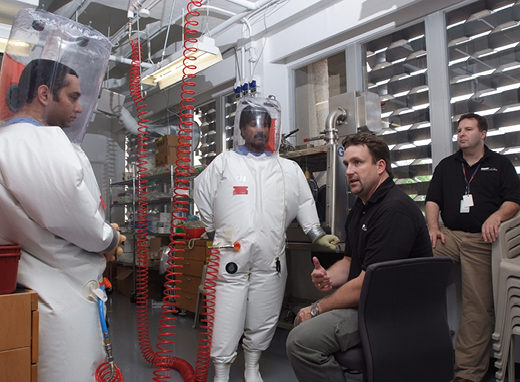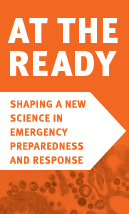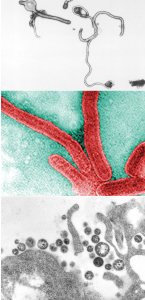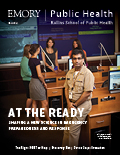Biosafety Net

Sean Kaufman (seated) and his team have trained more than 2,000 researchers worldwide to minimize their risk of infection when handling pathogens in high-level biosafety laboratories.
Sean Kaufman protects laboratory workers who handle the most dangerous pathogens in the world.
|
|
Sean Kaufman’s job takes him all over the country and around the world. Though it may sound glamorous, his job is vital to protecting researchers who work with deadly diseases in biosafety laboratories.
These high-tech, highly secure facilities handle viruses such as Ebola, Marburg, and Lassa fever. To minimize the risk of infection, researchers must master a multitude of safety measures and operating standards. There’s no better way to learn than through a hands-on training course in a mock biosafety level-4 (BSL-4) laboratory, says Kaufman. Here he wants trainees to make mistakes because there is little room for error in a real laboratory.
“You can learn about BSL emergencies from textbooks,” says Kaufman, “the same way you theoretically can learn to swim from a PowerPoint presentation. But the only real way to learn how to respond to BSL emergencies is by responding. Our program bridges the gap between knowing something and being able to do it quickly and with minimum risk.”
Kaufman designed the biosafety training course seven years ago after Ruth Berkelman, director of the Center for Public Health Preparedness and Research, received an NIH grant to create such a program. Berkelman tapped him for his expertise in human behavior and his affinity for working on infectious disease issues.
“Previously, training was behavior-based with little or no simulation training,” he says. “With hands-on training, we can move people from being novices, we can put them safely in settings of a laboratory emergency, and overall, we can begin to create experts.”
Training scenarios are designed to induce frustration or panic.
|
|
For example, learning how to move around in heavy protection gear is a feat in itself. Just squatting to pick up a dropped object is an exercise in strength and balance. Participants are tethered to air hoses and are yanked back if they try to walk across the room. “Students realize they are thinking at the speed of light, but they are moving at the speed of a turtle,” says Kaufman.
In another scenario, he tells a participant to pretend to collapse on the floor. Other participants are inclined to rush over to the person, but what if a second person goes down? How do you move an unconscious co-worker? (Answer: with plastic trays.) How does one get out of the laboratory if the power has gone out? (Form a conga line to exit.)
Since Kaufman designed the program, more than 2,000 participants have come through the doors of the mock laboratory on Emory’s Briarcliff Campus, including those from as far away as Pakistan, India, Singapore, and the Philippines. In the past 12 months, he has traveled to Jordan, Switzerland, India, Mexico, and Honduras, in addition to traveling domestically to the University of Florida, George Mason University, and UCLA.
For Kaufman, the best part of the job “is when participants learn to do something they thought impossible that will protect them in a laboratory emergency.”—Kay Torrance



